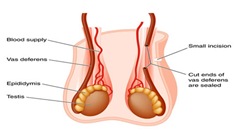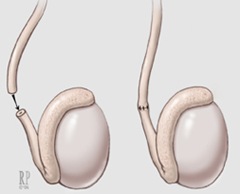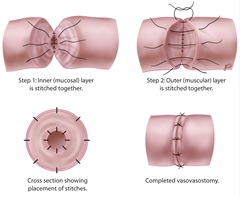What are some good vasectomy reversal resources? Many people tend to change their minds about the vasectomy procedure they underwent and opt for a reversal. Believe it or not, this is quite common, and many men choose vasectomy reversal at some point in their lives. This procedure isn’t always successful, and you may still have trouble conceiving afterward. Are you curious about vasectomy reversals and want to learn more about them before you decide if it would be a good option? If so, continue reading…
What Happens During a Vasectomy?
When performing a vasectomy, the doctor blocks or cuts the vas deferens; these tubes transfer sperm from the testes toward the penis. During vasectomy reversal procedures, the surgeon has to reattach the tubes together to ensure sperm can flow into the semen.
How do Surgeons Perform Vasectomy Reversals?
Surgeons can perform vasectomy reversals through 2 main methods. They are:
Vasovasostomy: In this method, the doctor reconnects the detached vas deferens.
Vasoepididymostomy: In a vasoepididymostomy, doctors connect the vas deferens tubes to a small organ. This organ is at the back of the testicles holding the sperm. A vasoepididymostomy is a complex procedure, and doctors only choose it if they don’t think a regular vasovasostomy would work.
Who Can Undergo this Procedure?
People usually opt for a vasectomy because they do not want to conceive kids. However, many people who undergo this procedure have a change of heart at a later stage. They either want to begin a family or have more kids, so they choose a vasectomy reversal. Men who lose a child also consider this option.
This procedure can be quite helpful for a small percentage of men who experience severe pain in their testicles because of a vasectomy.
What is the Most Effective Resource for Performing a Vasectomy Reversal?
Performing a vasectomy or a reversal requires a great deal of skill and experience. The procedure involves several nuances, so it is important to choose someone who has successfully performed this procedure multiple times. Urologists are trained surgeons and know the ins and outs of the reproductive system of males.
Some even have experience performing many vasectomies and are familiar with different techniques used to perform this procedure. While a few primary care doctors may also have experience with vasectomy reversals, it would be best to see a specialist because specialists have high success rates and are familiar with various vasectomy reversal methods suited for different patients and their anatomies.
Where are Vasectomies Performed?
Typically, vasectomies are performed in clinics or the doctor’s office. First, you will need to come in and settle, after which your doctor may give you a numbing medicine to calm you down for the procedure. Some individuals feel a slight pinch and some heat when doctors apply for the numbing medicine. Once the procedure begins, you may feel some pressure in the testicles. That said, the procedure doesn’t last long and doesn’t take more than thirty minutes.
Some patients feel pain in their scrotum after the procedure, but your doctor will most likely prescribe medication to manage it.
Vasectomy Reversal Resources: Final Thoughts
A vasectomy reversal is a complicated and delicate procedure, which is why you must only choose an experienced professional. Dr. Yaniv Larish and his team has years of experience performing vasectomies and are familiar with different ways to execute this surgery. Get in touch with us to book an appointment. Once you do, we will gauge your condition and advise you whether you should get a reversal and how to proceed.
Yaniv Larish, MD
4 East 76th Street
New York, NY 10021
(646) 862-5500





